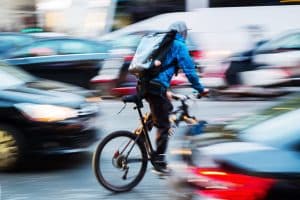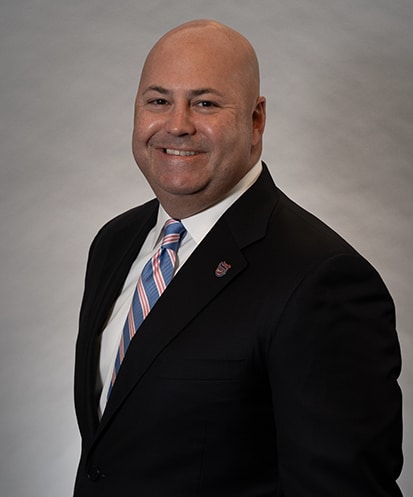Another Cyclist Dies on Washington, DC’s Dangerous Roads
 A 29-year-old man named Jim Pagels was killed this week in a chain reaction collision on Massachusetts Ave NW. An avid cyclist, Pagels had posted about the dangers of rising a bicycle in the Capital mere hours before he was struck by a car. Per the Washington Post:
A 29-year-old man named Jim Pagels was killed this week in a chain reaction collision on Massachusetts Ave NW. An avid cyclist, Pagels had posted about the dangers of rising a bicycle in the Capital mere hours before he was struck by a car. Per the Washington Post:
Pagels and a Kia were traveling west on Massachusetts Avenue NW near the intersection with Second Street NW. A Honda that was also westbound struck the rear of the Kia and the bicyclist simultaneously, police said. Both the Kia and Honda then drove into the intersection and struck two other cars that were northbound. Three motorists, including the driver of the Honda, were taken to a hospital for minor injuries, police said.
The Washington Post reports that the intersection where Pagels was killed is “particularly dangerous for bicyclists,” as that stretch of road doesn’t have a bike lane. The road itself is six lanes wide, and there’s a ramp for I-395 on that stretch. Earlier in the day, Pagels tweeted about another dangerous stretch of road near Route 50, including a Google Earth shot of the roundabout he had to navigate on his bike.
DC’s roads are more dangerous than ever for cyclists and pedestrians
This is the fourth traffic-related fatality in DC in under two weeks:
- Zyaire Joshua, 4-years-old, was struck by a car on April 1
- Evelyn Troyah, 54-years-old, was killed in a hit-and-run on April 3
- Brian Johnson, 30-years-old, was killed when another driver ran a red light on April 4
The DC Metro Police, who track traffic fatalities, have recorded a 71% increase in traffic deaths since last year. This is, of course, despite a pandemic which has reduced traffic to all-time lows. But for many cyclists and pedestrians, the regularly proposed solutions – slow down, don’t text, share the road – simply aren’t enough to reduce the risks, let alone the number of injuries and deaths, for people who must share the roads with drivers.
Much of this has to do with infrastructure. Cities like DC encourage walking and cycling but won’t change the actual structure of the roads to make it safe for those activities. They bring in Capital Bikeshare bikes, but won’t build bike lanes, or they create bike lanes that are too narrow to avoid being clipped by car doors or turning vehicles. They create pedestrian zones, but they don’t extend them far enough, or across wider highways in elevated walkways. They increase the size and width of highways to ease congestion without thinking about how that affects the spaces that cyclists and pedestrians use – or fixing the potholes that can cause cyclists and pedestrians to trip and fall right into traffic.
Even outdoor events and outdoor dining, designed to help protect small businesses and the arts over the last year, pose a significant risk to pedestrians, cyclists, and people with disabilities, by reducing the amount of navigable space on sidewalks.
This is not a new problem. In 2014, the Washington Post reported that even as more people chose to walk or ride around town, law enforcement lagged when it came to enforcing the rules to protect those riders and pedestrians.
How can DC be safe for pedestrians and cyclists?
Until Washington, DC commits to a complete overhaul of its road structure – an admittedly impossible ask, we assume – it will be up to residents, commuters, and visitors to keep our roads safe. There are some things we should all be doing: keeping our eyes on the road, following traffic signals and signs, making sure to look before turning, and making ourselves visible at night when we are walking, riding, or driving. According to Bicycling.com, there are other steps we can take, too, to make the roads safe:
- Demand better drivers ed courses. Most drivers ed classes, when they are required at all, focus on other drivers. We can ask our schools to make these courses more inclusive to pedestrians and cyclists, so that everyone is more aware of who is on the road with them.
- Push for enforcement of Vulnerable Road User laws. VRUs “help ensure equal protection for cyclists, pedestrians, and motorcyclists when they’re struck by drivers. They usually specify minimum fines rather than jail time, but they do help increase awareness and offer guidance to law enforcement about how to cite the driver if they’re at fault.” DC has these laws, but it may be time to expand them, and it’s definitely time to fight for better enforcement of them.
- Model good behavior. Whether you’re in a car, on a bike, or walking along the sidewalk, model good behavior for your little ones. If you show children and young drivers how to interact with others safely and respectfully, they will copy them when they’re driving, riding, or walking.
What to do if someone you love is hurt in a collision
Cyclists and pedestrians are at significant risk of injury any time they share the road. This risk only increases with larger cars, because the point of impact changes; a car will strike the legs and a pickup or SUV will strike the torso. Both can be deadly, but the torso hit may be exponentially worse, as the body will have no place to move except around the front of the car.
If you are with a pedestrian or cyclist who is hit by a vehicle of any size, the most important thing is to call 9-1-1 immediately, even if the person says they’re fine. Collisions can lead to brain injuries and internal bleeding, and those types of catastrophic injuries must be addressed ASAP. If the person can move out of the road, he or she should, but if you are unsure or the other person is unconscious, set up flares around your perimeter.
After that, start taking pictures. Take shots of the ground, of the person who is hurt, of the bicycle, of the car, and of the street signs and signals. Take pictures of yourself if you suffered any injuries. Make sure to send all of these pictures to your attorney. It could help him or her determine who is liable for the crash, as there could be more than one liable party.
After that, ensure that your loved one attends all follow-up medical appointments, so that he or she can heal. A lawyer can help with the day-to-day issues, such as dealing with the insurance companies and getting a copy of the police report.
Please contact Paulson & Nace, PLLC through this contact form or by calling 202-463-1999.

Christopher T. Nace works in all practice areas of the firm, including medical malpractice, birth injury, drug and product liability, motor vehicle accidents, wrongful death, and other negligence and personal injury matters.
Read more about Christopher T. Nace.
